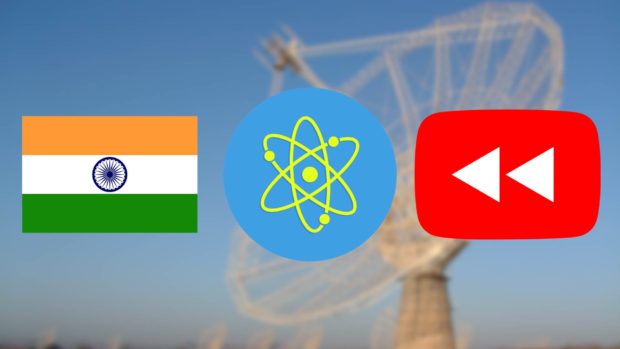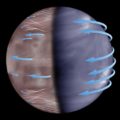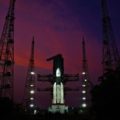The pandemic year was tough but India achieved quite a lot in the field of science. here are some of the top scientific achievements this year. If you prefer a video format and understand Hindi , i recommend you to watch the video below. This article serves as a reference doc to the video.
The Indian pandemic inventions
When the pandemic hit, Indian industry, scientists, and engineers came together to deliver solutions from PPE kits to Masks to even ventilators. One such ventilator was being made by IIT Kanpur in coordination with Nocca robotics. I covered their effort with a video you can watch here.
CSIR KPIT hydrogen car
CSIR collaborated with KPIT to develop a new Hydrogen fuel cell. The cell was retrofitted onto a car. Hydrogen fuel cell cars are seen as a potential no pollution way of operating vehicles. The bigger challenge is in the hydrogen production and storage process through which could lead to a reduced efficiency. Read More.
Drdo QKD demo
DRDO dropped a surprise by demonstrating QKD. Quantum key distribution involves distributing the key in such a way that any 3rd party observing breaks the encryption and we are immediately known. Instead of math, it uses physics. The phase of light is taken as a way of encrypting at the terminal ends. Read more.
Mangalyaan research on mars losing atmosphere
ISRO published a paper that showed that dust storms on Mars are responsible for the gradual loss of the atmosphere. It was concluded with data from mass spectrometer MENCA and from MAVEN. MOM had data from the evening side while MAVEN from the morning side. Read more.
MACE telescope goes live
It is the world’s second-largest, ground-based gamma-ray telescope with a 21-meter-diameter dish. The largest telescope of the same class is the 28-meter-diameter telescope, which is part of the High Energy Stereoscopic System (HESS) in Namibia. Read more.
Astrosat discovering one of the earliest galaxies
India’s multi-wavelength space telescope Astrosat telescope discovered one of the earliest galaxies almost 9.3 billion light-years away using the UV telescope on ASTROSAT. This was achieved by a multinational team led by IUCAA Pune. They observed in 2016, took them 2 years to analyses data and confirm their results. Published in Nature this year. This is very unique since this hasn’t been found using Hubble data yet because astrosats UV telescope is more sensitive to UV than HST. Read more.
Astrosat ULXP discovery
Astrosat discovered an ultra luminous X-ray pulsar nearby. It is the 2nd closest ULXP to us. Read more.
Param Siddhi Supercomputer
Puts India in the 63rd number on having the most powerful non distributed supercomputer. It is tailor-made for AI. Uses NVIDIA GPU for computing. It can do a peak of 5.6 petaflops. Read More.
Anticancer drug based on turmeric
a team of Indian scientists has found a way to control the expression of a cancer-inducing gene called cancer myelocytomatosis (c-myc), using a synthetic derivative of Curcumin obtained from Turmeric. Read More.
GMRT detects a decrease in hydrogen levels leading to a decrease in stars
Indian Researchers used the Giant meter wave radio telescope to study more than 7000 galaxies. They measured atomic hydrogen in the old galaxies. They concluded that older galaxies contained a lot more hydrogen than galaxies of today. And hence star formation has reduced significantly. Read more.
GMRT becomes 3rd IEEE facility
GMRT became a milestone facility this year, the only other milestone facilities are J.C. Bose demonstrating radio waves and the demonstration of the Raman effect by C. V. Raman. There are many conditions to getting a milestone. 25 years of demonstrated service and documentation is one. Read More.
ITER cryostat made by L&T
The cryostat will completely surround the vacuum vessel and superconducting magnets of the ITER fusion machine, insulating the magnetic system at an ultra-cold temperature. The 3800-tonne cryostat will be the world’s largest steel vacuum chamber, with a volume of 16,000 cubic metres. It has been built in 54 segments at L&T’s Hazira facility under a contract awarded to the company in 2012. Read more.
HS200 human-rated segment delivery
ISRO’s heavy-lift launcher, GSLV MkIII is identified for the Gaganyaan Mission and the process for human rating of GSLV MkIII is in progress. The high thrust solid propellant strap-on boosters S200 play an important role in the Human Rated GSLV MkIII. The first critical booster segment of the motor case with a diameter of 3.2 meters, 8.5 meters in length, and weighing 5.5 tons has been indigenously developed and delivered by L&T to ISRO. Read more.
Cucumber peel as paper by Indian researchers
Researchers at the Indian Institute of Technology (IIT) Kharagpur have developed cellulose nanocrystals from cucumber peels with high cellulose content, compared to other peel wastes, which can be used to create food packaging materials. They made natural biopolymers to make single used food packaging that has good biodegradability. Read More.
Andaman optic fibre cable
Andaman got access to high-speed internet and connectivity this year. An Optic fiber connecting via Chennai and the islands. Read more.
Indian solution for retinal pigementosa
They used monocytes modified into stem cells to fix retinal degenerative diseases in human eyes. The below article is worth reading. Read more.
IIT Jodhpur biofuel breakthrough
Professor Rakesh K Sharma and his postdoctoral researcher Dr. Krishnapriya have developed a catalytic system that has nanometre size cramped galleries in Silica-Alumina sheets (a refined form of clay). These confined galleries work as nanoreactors for catalytic reactions and convert the biomass to transport fuel under mild conditions. The process is under patent. The findings of this research have been published in two journals; RSC Journal Sustainable Energy & Fuels and Fuel from Elsevier recently. The department of biotechnology has supported this study under the National Bioenergy Mission. The reaction is extremely fast and takes place just around 250-degree temperature to give petroleum grade fuel. Read More.
L&T 3d printed building
The 3D printed building, which has a built-up area of 700 sq. feet and is located at L&T Construction’s Kanchipuram facility, has been built with a special, in-house developed concrete mix using indigenously available regular construction materials. The building was printed with both vertical reinforcement bars and horizontal distributors using welded mesh, that satisfy provisions in the Indian Codes and optimize the cost of construction. Barring the horizontal slab members, the entire building structure was 3D printed ‘Cast in Situ’ at the job site in an ‘open to sky’ environment within 106 printing hours, using a fully automated 3D printer. Read More.
Indian Moon Bricks
Indian scientists from IISC Bangalore and ISRO have made Moon bricks using a Lunar soil simulant. A special bacteria was used in this process to leave calcite material. this when hardened can be formed into a brick shape. The team led by Sir Alok Kumar from IISc Banglore also published papers on the same. Read More.
Some more
Skyoot Raman engine tested
New hydrogen catalyst
Researchers develop new hydrogen-generating photocatalyst design (vigyanprasar.gov.in)
IMD flash flood guidance
To tackle flash floods & issue advance warnings, IMD launches guidance system for South Asia | India News,The Indian Express
Indian students discover an asteroid
Two Indian Students Discover Six Preliminary Asteroids in Worldwide Search Campaign (vice.com)
IIT h zinc battery
Ashok Leyland, Hindustan Zinc team up with IIT-M to develop Zinc air battery – The Hindu BusinessLine
co2 battery
IIT-H professor’s proposed Metals CO2 battery likely to come handy for Mars Mission (telanganatoday.com)
Possible Indian solution for Tonsil Cancer
A new way forward for treatment of tonsil cancer (vigyanprasar.gov.in)
Indian solution to tongue cancer?
Scientists pave way for potential new therapy for tongue cancer (vigyanprasar.gov.in)




